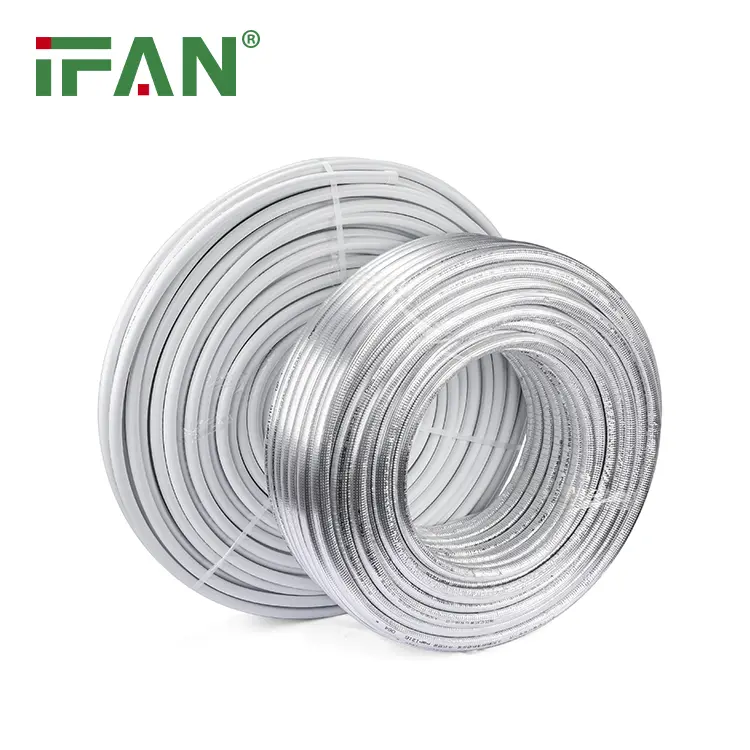Insulating PEX pipe optimizes energy efficiency and safeguards against freezing in colder climates. It involves wrapping the pipes with insulating materials to minimize heat loss and maintain consistent water temperature.
Choosing the Best Insulation Method
Select insulation based on climate, cost, and installation ease for optimal performance. Consider factors such as the severity of winters, budget constraints, and the accessibility of the piping system.
Advantages of PEX Insulation
PEX insulation conserves energy, prevents freezing, and extends the lifespan of plumbing systems. It reduces heat transfer between the water inside the pipes and the surrounding environment, resulting in lower energy bills and fewer instances of pipe damage.
Enhancing Energy Efficiency
Insulating PEX pipe minimizes heat loss, reducing energy consumption and associated costs. By creating a barrier between the warm water and the cooler surroundings, insulation helps maintain the desired water temperature with minimal energy expenditure.
Preventing Freezing in Cold Climates
Effective insulation shields PEX pipes from freezing, preventing damage and costly repairs. In regions with sub-zero temperatures, uninsulated pipes are susceptible to freezing, leading to bursts and water damage. Insulation acts as a protective layer, keeping the pipes above freezing temperature even in harsh conditions.
Extending Plumbing System Lifespan
PEX insulation protects pipes from temperature fluctuations, enhancing durability and reliability. Temperature variations can cause expansion and contraction of materials, leading to stress on the pipes and potential leaks. Insulation helps stabilize the temperature, reducing wear and tear on the plumbing system.
Selecting the Right Insulation Material
Consider factors such as R-value, durability, and moisture resistance when choosing insulation. The R-value indicates the insulating effectiveness of the material, with higher values offering better insulation. Additionally, opt for materials that can withstand exposure to moisture and environmental elements for long-term performance.
Understanding R-Value
Higher R-values indicate better insulation performance, crucial for maximizing energy savings. When selecting insulation for PEX pipes, prioritize materials with higher R-values to achieve superior thermal efficiency. This ensures that the insulation effectively minimizes heat loss and maintains water temperature.
Considering Durability
Choose insulation materials resistant to wear, tear, and environmental factors for long-lasting protection. Durable insulation withstands the rigors of installation and remains effective over time, minimizing the need for frequent replacements. Look for materials with proven durability and reliability to ensure lasting insulation performance.
Managing Moisture
Select insulation with moisture barriers to prevent water damage and mold growth within the pipes. Moisture can compromise the integrity of insulation and promote the growth of mold and mildew, leading to potential health hazards and structural issues. Incorporating moisture barriers helps maintain a dry environment around the pipes, preserving their condition and efficiency.
Exploring Installation Methods
Various techniques, including pre-slit tubes and foam wraps, offer efficient PEX insulation solutions. Choose the method that best suits your specific needs and preferences, considering factors such as ease of installation, cost-effectiveness, and insulation effectiveness.
Pre-Slit Tubes
Pre-slit tubes simplify installation by sliding over PEX pipes, reducing time and effort. These tubes come pre-cut with a longitudinal slit, allowing them to be easily wrapped around the pipes without the need for additional cutting or shaping. This method is ideal for quick and straightforward insulation projects, especially in accessible areas.
Foam Wrap Insulation
Foam wraps provide a snug fit around PEX pipe, offering excellent thermal insulation properties. These wraps consist of flexible foam material that conforms to the shape of the pipes, providing uniform insulation coverage. Foam wraps are versatile and can be used in various applications, including both indoor and outdoor installations.
Reflective Insulation
Reflective insulation deflects heat, enhancing energy efficiency and maintaining water temperature. This type of insulation features a reflective surface that reflects radiant heat away from the pipes, preventing heat loss and minimizing energy consumption. Reflective insulation is particularly effective in areas with high solar radiation or temperature differentials.
Installation Tips for Optimal Performance
Ensure proper fitting, sealing, and coverage to maximize insulation effectiveness and energy savings. Follow these guidelines to achieve the best results with your PEX insulation installation:
Fitting and Sealing
Secure insulation tightly around pipes, sealing any gaps to prevent heat loss. Use adhesive or tape to ensure a snug fit and prevent air leakage, especially at joints and connections. Proper fitting and sealing are essential for maintaining insulation integrity and maximizing thermal efficiency.
Covering Exposed Areas
Insulate all exposed sections of PEX pipes, including attics, basements, and crawl spaces. Pay special attention to areas prone to temperature extremes or drafts, as these can significantly impact insulation performance. Ensure complete coverage of all pipe surfaces to minimize heat loss and maintain consistent water temperature throughout the system.
Using Vapor Barriers
Integrate vapor barriers to prevent moisture buildup within the insulation, preserving pipe integrity. Vapor barriers help create a moisture-resistant barrier around the pipes, preventing condensation and humidity from compromising insulation effectiveness. Choose vapor barrier materials compatible with your insulation type and installation method for optimal moisture protection.
Regular Maintenance for Longevity
Inspect insulation periodically for damage or wear, repairing or replacing as needed to maintain efficiency. Regular maintenance helps identify potential issues early and address them before they escalate into more significant problems. Monitor insulation condition regularly and take proactive measures to ensure continued performance and energy savings.
Conclusion: Maximizing Efficiency with PEX Insulation
Insulating PEX pipe is essential for energy efficiency, freeze protection, and plumbing system longevity. By choosing the right insulation materials and installation methods, homeowners can maximize thermal efficiency, reduce energy costs, and protect their plumbing systems from temperature fluctuations. Invest in quality insulation and follow best practices for installation and maintenance to enjoy long-lasting benefits and peace of mind.
If you have read this article and have any questions, please feel free to contact IFAN. Below is our contact information:
Whatsapp:+86 13373827623
Email:[email protected]










































